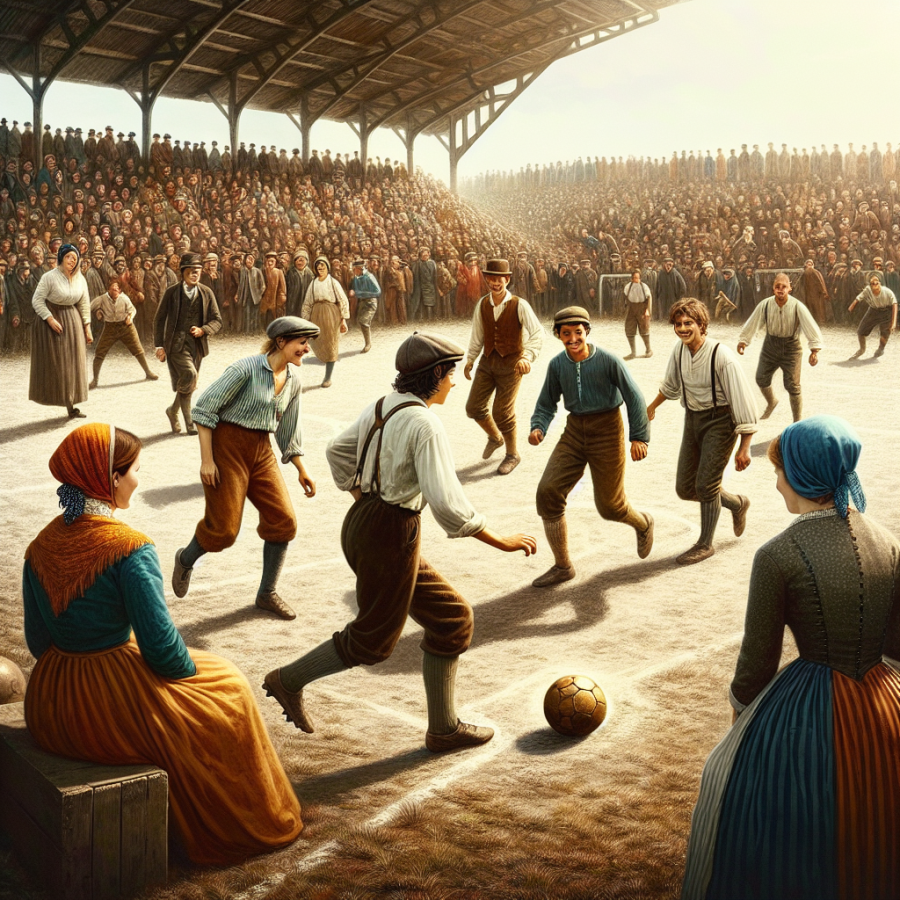Unearthing the Roots: Ancient Traditions that Precursor Modern Soccer
A game as loved globally as soccer does not simply materialize from thin air. Its existence is a culmination of centuries-worth of games, traditions and rituals, many of which are deeply woven into the fabric of cultures around the world.
Exploring Ancient Cultures: The Footprints of Early Soccer
Perhaps the earliest ancestors of modern soccer can be traced back to ancient China. During the Han Dynasty, soldiers played a game, better known as 'Tsu-chu', that revolved around kicking a leather ball filled with feathers and hair through an opening, which was measured at roughly 30-40cm, into a small net. Another game, 'Cuju' was also popular in China and Japan. These games emphasized using feet, head, and chest to keep the ball in motion, bearing a striking resemblance to the "beautiful game" we know today.
Meanwhile, across the globe in Mesoamerica, civilizations such as the Aztecs and Mayans were engaged in a ritualistic ball game known as 'Pok-ta-Pok', where players sought to propel a ball through stone hoops fixed at height on the side of a court. Though the ritualistic aspect overshadowed the competitive element, the physical endeavour and ball control of 'Pok-ta-Pok' are not foreign to soccer.
Ancient Greeks and Romans: Warfare and Play
Venture a little further to ancient Greece and the gameosphaira, played using a ball made of inflated ox bladder, would surface. The Greeks valued physical fitness and cultivated this game to keep their soldiers in shape during periods of relative tranquility.
The Romans also had a similar game called 'harpastum', which was essentially a blend of rugby and soccer. It was fast-paced, extremely physical and likely used as training for Roman soldiers. Harpastum eventually spread throughout the Roman Empire, laying the groundwork for soccer-like games across regions under Roman influence.
The Medieval Influence: Empowering the Masses
In medieval Europe, the precursors of modern soccer were much more chaotic. 'Mob football' was an annual event in England where virtually the entire village participated. The ball - typically an inflated pig’s bladder - could be kicked or carried, with the aim of getting it to markers at either end of the town.
These traditions began to coalesce into a more organized form of play by the 19th century.
Read also:
The Thrilling World of Roller Derby: An In-Depth Exploration
The Evolution of Soccer: From Medieval Folk Games to the Global Sport Phenomenon
The evolution of soccer, like many sports, is a journey marked by cultural shifts, technological advancements, and societal changes. Prior to its universal recognition as "the beautiful game," soccer had a humble beginning as unorganized medieval folk games, which laid the foundations for the sport as we know it today.
In the earliest of times, approximately 2000 B.C., versions of soccer were played in ancient civilizations in China, Greece, and Rome. In China, a game called "Cuju" was played with a feather-filled ball, kicked through a net strung between two poles. In ancient Greece and Rome, games resembling soccer were used as military training exercises. These early forms of the sport were substantially different from modern soccer; they could be violent, disorganized, and often carried significant cultural or religious connotations.
The Middle Ages in Europe saw the advent of folk football, a similar but notably chaotic and violent game. This version, played in towns and villages across England, Scotland, and France, was essentially a free-for-all, with sometimes up to hundreds of players aiming to carry or kick an inflated pig's bladder into a specific goal. At this time, there were still no formal rules or structure as we see in today's game.
In the 19th century, the industrial revolution in Britain brought about a transformation in the game. The need for systematic rules became evident to allow for smooth gameplay, especially in schools. The first standardized rules, known as the Cambridge Rules, were established in 1848. However, several different versions of these rules emerged across schools and institutions, leading to discrepancies and confusion in the gameplay.
In 1863, a major milestone was reached when the Football Association (FA) was formed in England. This was a direct result of the disagreement over the lack of standardized regulations. The FA established formal rules for the game, effectively drawing the line between rugby and soccer, and for the first time, officially recognizing soccer as a distinct sport.
The spread of soccer outside Britain began in the late 19th century, initially to countries in continental Europe, before reaching other parts of the world. Industrial workers, sailors, and British expatriates helped introduce the game to different regions. The establishment of national football associations led to friendly matches and tournaments between nations, fostering the sport's popularity globally.




